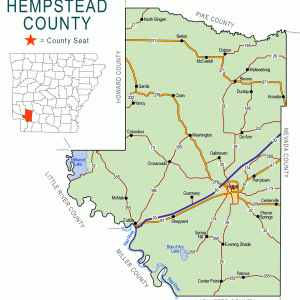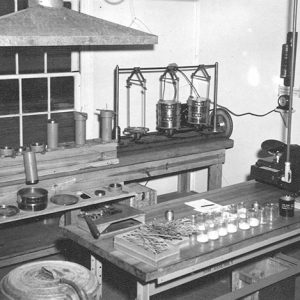calsfoundation@cals.org
Oakhaven (Hempstead County)
| Latitude and Longitude: | 33°43’45″N 093°37’15″W |
| Elevation: | 364 feet |
| Area: | 0.05 square miles (2020 Census) |
| Population: | 65 (2020 Census) |
| Incorporation Date: | October 4, 1947 |
Historical Population as per the U.S. Census:
|
1810 |
1820 |
1830 |
1840 |
1850 |
1860 |
1870 |
1880 |
1890 |
1900 |
|
– |
– |
– |
– |
– |
– |
– |
– |
– |
– |
|
1910 |
1920 |
1930 |
1940 |
1950 |
1960 |
1970 |
1980 |
1990 |
2000 |
|
– |
– |
– |
– |
81 |
87 |
83 |
72 |
35 |
54 |
|
2010 |
2020 |
|
|
|
|
|
|
|
|
|
63 |
65 |
|
|
|
|
|
|
|
|
Oakhaven is a town on State Highway 32, a few miles north of Hope (Hempstead County). Originally built as housing for officers serving at the Southwestern Proving Ground during World War II, Oakhaven has never had a post office or a school.
Hempstead County was home to some of the most important communities of southwestern Arkansas in the early years of statehood. Fulton (Hempstead County) was an important port on the Red River and once served as the gateway to Mexico—later to Texas—while Washington (Hempstead County) was the county seat and an important city on the Southwest Trail; Washington even served as the Confederate state capital after Little Rock (Pulaski County) was captured by Federal forces in 1863. After the war, railroad construction bypassed Washington, and Hope became the new important city of the region, and it was designated county seat of Hempstead County in 1939. The site that would become Oakhaven was rich farmland, first claimed by Francis Gildart in 1837.
In 1941, the Department of War of the U.S. government acquired more than 50,000 acres in Hempstead County and spent approximately $15,000,000 to build a testing ground for ordnance. More than 400 families were displaced by the acquisition. The Southwestern Proving Ground included an airport that hosted the third-longest runway in the United States at that time. Various bombs and shells were exploded on the land, and airplanes dropped test bombs in the Gulf of Mexico. During construction of the facility, 4,000 workers were employed, and during wartime operations, 500 civilians worked on the grounds. Twenty houses were built east of the airport for the officers who served at the proving ground.
When the war ended in 1945, the Southwestern Proving Ground was declared surplus property. Much of the land was considered unsafe due to unexploded ordnance, but the airport and the officers’ homes were fit for resale. The airport was donated to the City of Hope and remains Hope Municipal Airport. The twenty houses were bought by the City of Hope with the promise that they would be sold to veterans. This promise was kept, and the new residents voted to incorporate as a town in 1947. Each house came with about an acre of land. Oakhaven became a bedroom community to the city of Hope and, since its incorporation, has been one of the most affluent incorporated communities in the state of Arkansas, with a median household income of $63,750 as of the 2000 census, though this dropped to $42,525 by 2012. The old officers’ quarters were listed on the National Register of Historic Places on July 8, 2008.
Across the highway from Oakhaven, military buildings were converted into a steel manufacturing plant. Bought by Steel Dynamics Inc. in 2010 from Commercial Metals Corporation, the plant was renamed New Millennium Building Systems. It employs about 160 workers and manufactures steel joists.
For additional information:
“New Millennium Restarts Former Commercial Metals Steel Joist Plant in Hope.” Magnolia Reporter, October 24, 2011. Online at http://www.magnoliareporter.com/news_and_business/local_business/article_e6f3273c-feb8-11e0-923e-001cc4c03286.html (accessed November 21, 2025).
“Southwestern Proving Ground Airport Historic District.” National Register of Historic Places nomination form. On file at Arkansas Historic Preservation Program, Little Rock, Arkansas. Online at https://www.arkansasheritage.com/docs/default-source/national-registry/he0783-pdf.pdf?sfvrsn=3c6944e9_0 (accessed November 21, 2025).
Turner, Mary Nell. “Southwestern Proving Ground, 1941–1945.” Journal of the Hempstead County Historical Society (Spring 1986): 3–41.
Steven Teske
Butler Center for Arkansas Studies






Comments
No comments on this entry yet.